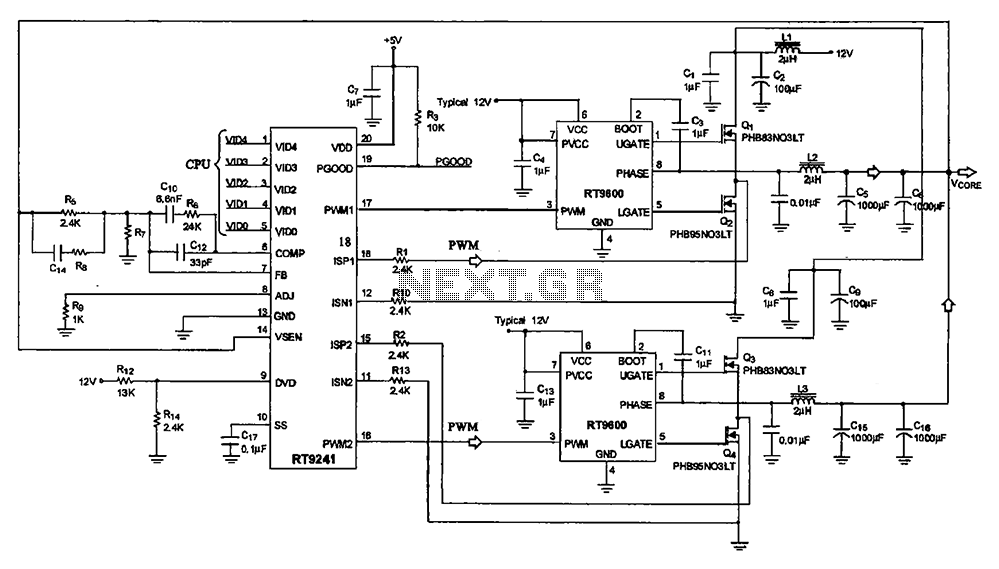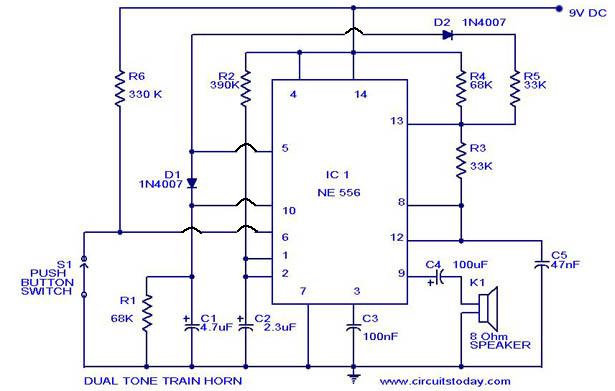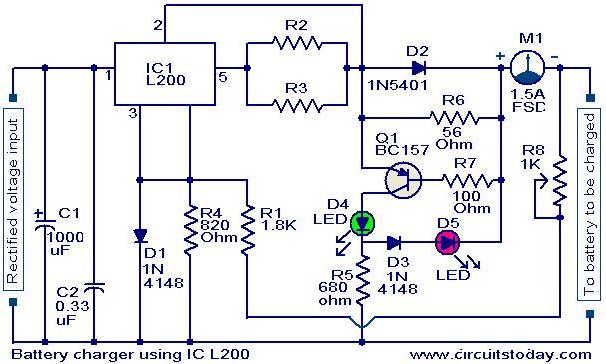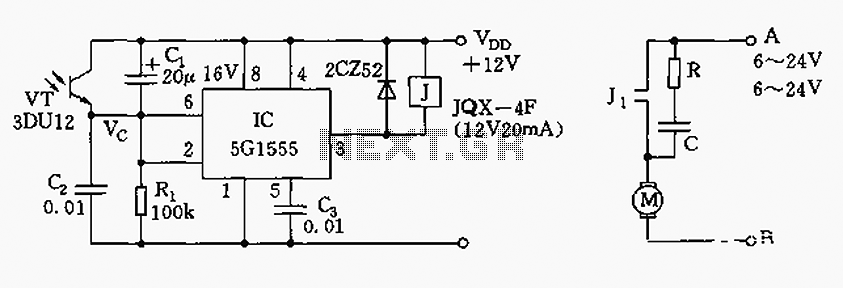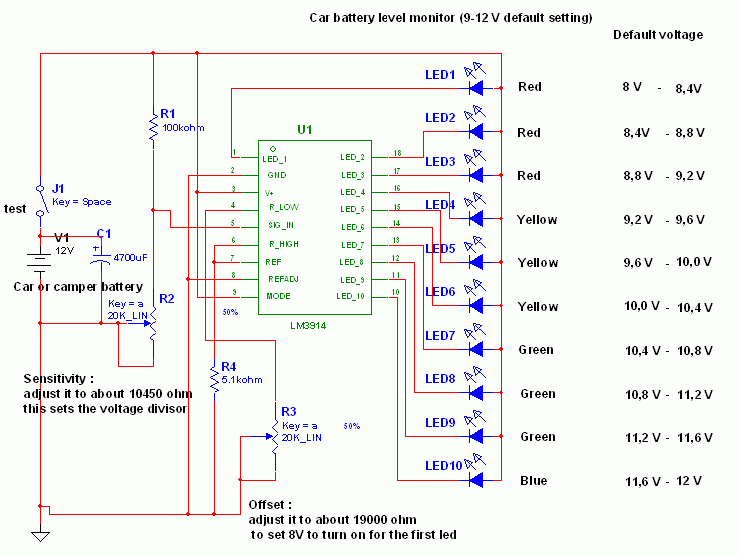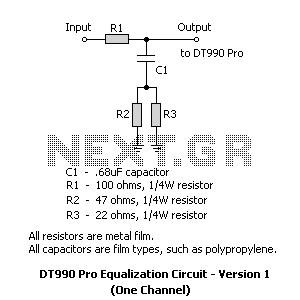
Active Fourth-Order Low-Pass Filter Circuit
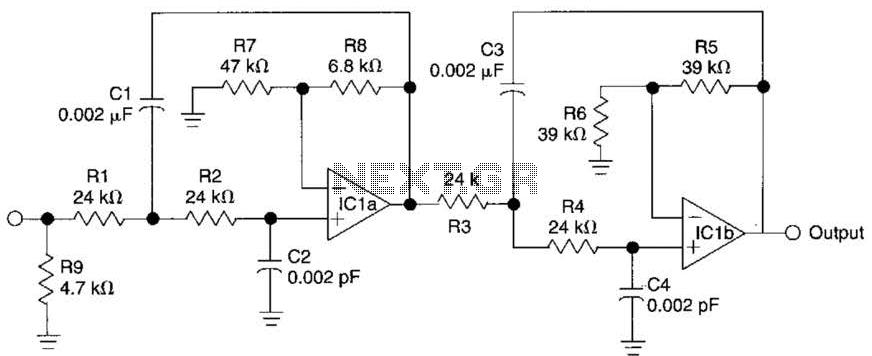
This circuit is a fourth-order low-pass filter designed for operation at kilohertz frequencies. The component values for resistors R1, R2, and capacitors C1, C2, as well as resistors R3, R4 and capacitors C3, C4 can be adjusted for functionality at different frequencies. The filter exhibits a roll-off characteristic of 24 dB per octave.
The fourth-order low-pass filter circuit is composed of a combination of resistors and capacitors configured to attenuate high-frequency signals while allowing low-frequency signals to pass. The circuit typically consists of two stages of second-order filters, which can be realized using active components like operational amplifiers or passive components alone, depending on the design requirements.
In this configuration, the resistors (R1, R2, R3, and R4) and capacitors (C1, C2, C3, and C4) define the cutoff frequency, which is the frequency at which the output signal power is reduced to half its value (or -3 dB point). The cutoff frequency (fc) can be calculated using the formula:
fc = 1 / (2π√(R1 * C1))
Where R1 and C1 are the components in the first stage. The same formula applies to the second stage with its respective resistors and capacitors.
The roll-off rate of 24 dB/octave indicates that for every doubling of frequency beyond the cutoff frequency, the output signal's amplitude is reduced by 24 dB. This steep roll-off is advantageous in applications where it is crucial to eliminate unwanted high-frequency noise while preserving the integrity of the desired low-frequency signal.
To adjust the filter characteristics for different frequency ranges, the values of the resistors and capacitors can be scaled proportionally. For instance, increasing the values of R1 and C1 will lower the cutoff frequency, while decreasing these values will raise the cutoff frequency. This flexibility allows the circuit to be tailored for specific applications, such as audio processing, signal conditioning, or data acquisition systems, where different frequency response characteristics are required.
In summary, this fourth-order low-pass filter circuit is a versatile design that can be adapted for various frequency applications while providing a robust attenuation of high-frequency signals with a notable roll-off characteristic. This circuit is a fourth-order low-pass filter with values for kHz. The values of Rv R2, C and C2, and R3, R4, C3 and C`4 can be scaled for operation at other frequencies. Roll-off is 24 dB/octave. 🔗 External reference
The fourth-order low-pass filter circuit is composed of a combination of resistors and capacitors configured to attenuate high-frequency signals while allowing low-frequency signals to pass. The circuit typically consists of two stages of second-order filters, which can be realized using active components like operational amplifiers or passive components alone, depending on the design requirements.
In this configuration, the resistors (R1, R2, R3, and R4) and capacitors (C1, C2, C3, and C4) define the cutoff frequency, which is the frequency at which the output signal power is reduced to half its value (or -3 dB point). The cutoff frequency (fc) can be calculated using the formula:
fc = 1 / (2π√(R1 * C1))
Where R1 and C1 are the components in the first stage. The same formula applies to the second stage with its respective resistors and capacitors.
The roll-off rate of 24 dB/octave indicates that for every doubling of frequency beyond the cutoff frequency, the output signal's amplitude is reduced by 24 dB. This steep roll-off is advantageous in applications where it is crucial to eliminate unwanted high-frequency noise while preserving the integrity of the desired low-frequency signal.
To adjust the filter characteristics for different frequency ranges, the values of the resistors and capacitors can be scaled proportionally. For instance, increasing the values of R1 and C1 will lower the cutoff frequency, while decreasing these values will raise the cutoff frequency. This flexibility allows the circuit to be tailored for specific applications, such as audio processing, signal conditioning, or data acquisition systems, where different frequency response characteristics are required.
In summary, this fourth-order low-pass filter circuit is a versatile design that can be adapted for various frequency applications while providing a robust attenuation of high-frequency signals with a notable roll-off characteristic. This circuit is a fourth-order low-pass filter with values for kHz. The values of Rv R2, C and C2, and R3, R4, C3 and C`4 can be scaled for operation at other frequencies. Roll-off is 24 dB/octave. 🔗 External reference
